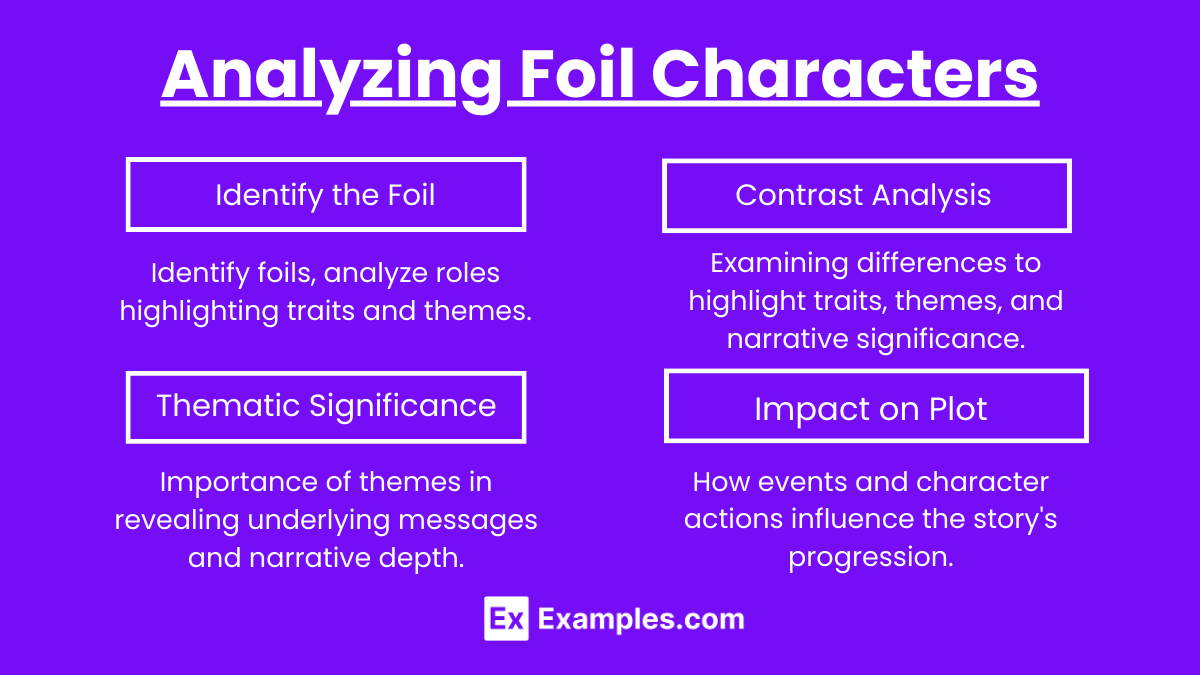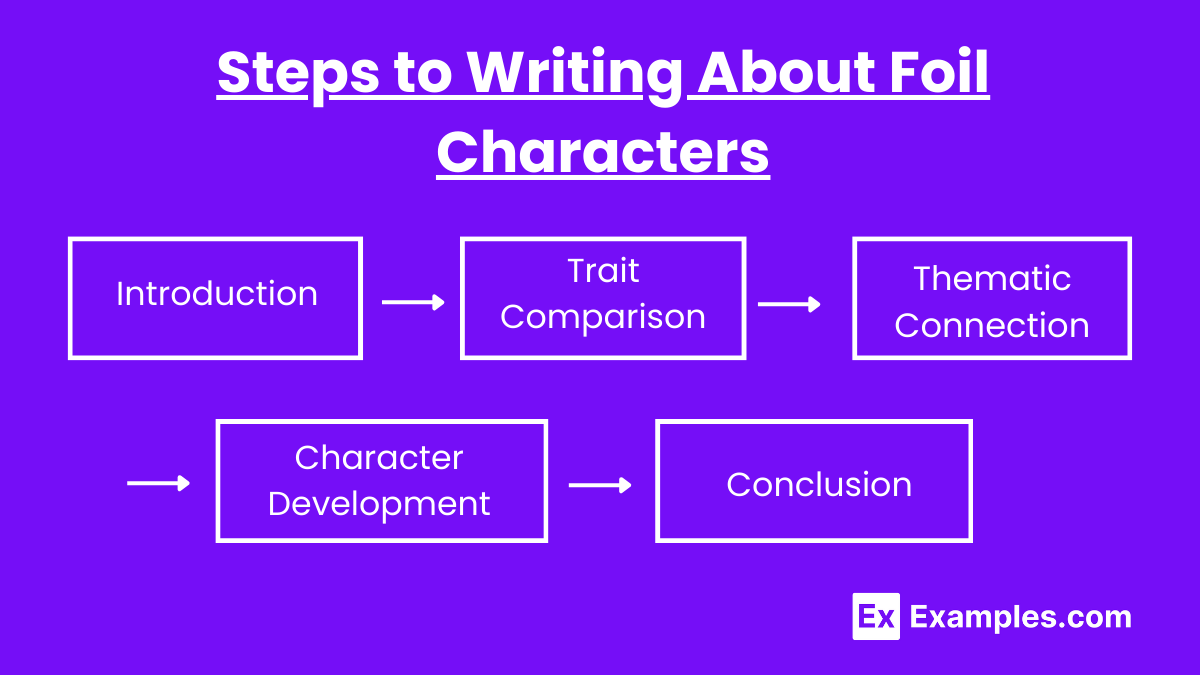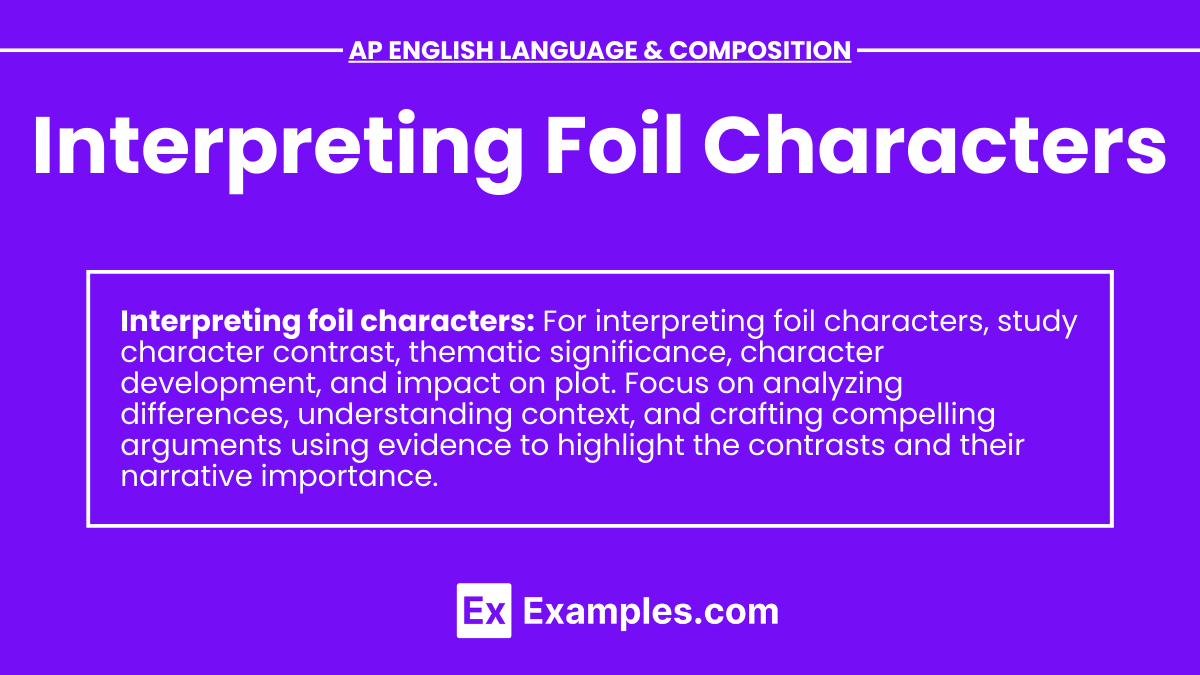In the study of AP English Language and Composition, understanding the concept of foil characters is essential for analyzing and interpreting literature effectively. Foil characters serve as contrasts to the main characters, highlighting specific traits and deepening the reader's understanding of the narrative. By examining these contrasts, students can enhance their skills in argumentative writing and argumentative speech, as they learn to build strong, compelling arguments supported by textual evidence. Crafting rhetorical sentences that emphasize the differences between foil characters allows for more persuasive analysis, while cumulative sentences can effectively detail the various ways in which these characters interact and influence the story. This approach not only enriches literary analysis but also hones critical thinking and writing skills, crucial for success in the AP exam.
Free AP English Literature and Composition Practice Test
Learning Objectives
By the end of this lesson on interpreting foil characters, students will be able to craft cumulative sentences that effectively detail the contrasting traits of foil characters, construct an explanatory essay that explores the thematic significance of these characters, and develop an expository essay that outlines their impact on the plot and character development. They will learn to write rhetorical sentences that highlight key differences and support their final thesis statement with clear, persuasive arguments. Additionally, students will enhance their critical thinking skills by analyzing how foil characters contribute to the narrative's depth and complexity.
Definition of Foil Characters
Foil characters are pairs of characters that contrast with one another in order to highlight particular qualities and characteristics. A foil character's primary purpose is to illuminate, through contrast, the traits, roles, and motivations of another character, usually the protagonist.
Key Features of Foil Characters

Contrast in Traits: The foil character exhibits traits that are opposite to those of the main character. This contrast helps to highlight the distinctive characteristics of both.
Highlighting Themes: Through their differences, foil characters can underscore central themes of the narrative.
Revealing Complexity: Foils can add depth to the story by showing different facets of similar situations or decisions faced by the characters.
Character Development: The presence of a foil can drive the protagonist's development by challenging their views or decisions.
Examples of Foil Characters in Literature
Dr. Jekyll and Mr. Hyde in Strange Case of Dr Jekyll and Mr Hyde by Robert Louis Stevenson: Dr. Jekyll represents the respectable, rational side of human nature, while Mr. Hyde embodies the baser, darker instincts.
Harry Potter and Draco Malfoy in Harry Potter series by J.K. Rowling: Harry is brave, selfless, and morally upright, while Draco is often depicted as cowardly, selfish, and morally ambiguous.
Elizabeth Bennet and Mr. Darcy in Pride and Prejudice by Jane Austen: Elizabeth's prejudice contrasts with Darcy's pride, and through their interactions, both characters grow and change.
Analyzing Foil Characters

Identify the Foil: Determine which characters are being used as foils and understand their roles in the story.
Contrast Analysis: List the traits, behaviors, and beliefs of the foil characters. Highlight the contrasts and how these differences emphasize key characteristics.
Thematic Significance: Consider how the foil relationship reinforces or challenges the main themes of the work.
Impact on Plot: Analyze how the interaction between the foil characters influences the plot and the protagonist's journey.
Key Terms
Character Contrast: The clear differences between the foil characters.
Protagonist: The main character of the story, whose traits are often highlighted by the foil.
Antithesis: A rhetorical device that contrasts two opposing ideas in close proximity to highlight differences.
Duality: The presence of two contrasting elements within a narrative, often embodied by foil characters.
Steps to Writing About Foil Characters

Introduction: Introduce the characters and the concept of foils. Briefly explain the significance of the foil relationship in the context of the story.
Trait Comparison: Describe the specific traits of each foil character, providing examples from the text.
Thematic Connection: Discuss how the foil relationship ties into the broader themes of the work.
Character Development: Explain how the foil influences the development of the main character and the overall narrative arc.
Conclusion: Summarize the importance of foil characters in enhancing the reader's understanding of the main character and the story's themes.


